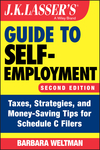Social Security Changes for 2018
Social Security beneficiaries will receive a cost-of-living adjustment (COLA) of 2% starting with the December 2017 benefits, which are payable in January 2018. For 2017, the COLA was only 0.3%. The 2% COLA is the largest since the 3.6% COLA that took effect in January 2012(Social Security Administration Press Release and Fact Sheet, 10/13/17; https://www.ssa.gov/news/press/releases/#/post/10-2017-1).
However, for many Social Security recipients, the net benefit of the 2% COLA will be reduced by an increase in Medicare B premiums. The Part B premiums should be announced soon; stay tuned for the details.
Along with the 2% benefits COLA comes an increase in the maximum amount of earnings subject to the 6.2% Social Security tax. For 2018, earnings up to $128,700 are subject to the tax, up from $127,200 in 2017. This means that employees who earn wages of $128,700 or more in 2018 will have the maximum Social Security tax of $7,979.40 (6.2% x $128,700) withheld from their wages; the employer pays the same amount as the employee.
Self-employed individuals will figure their 2018 self-employment tax (Schedule SE) by applying the Social Security tax rate of 12.4% (6.2% employer share plus 6.2% employee share) to their first $128,700 of net earnings, but this is after the net earnings are reduced by 7.65%.
All wages, regardless of amount, are subject to the 1.45% Medicare tax withholding rate, and on Schedule SE, all self-employment net earnings (after the 7.65% reduction) are subject to the 2.9% Medicare tax (employer and employee shares). The $128,700 ceiling applies only to Social Security tax, not Medicare. In addition, employees and self-employed individuals with earned income over $200,000, or $250,000 if married filing jointly ($125,000 if married filing separately), must pay Additional Medicare Tax of 0.9%.
Social Security earnings limit. For benefit recipients who are under age 66 for all of 2018, benefits will be reduced by $1 for every $2 of earnings over $17,040 (it was $16,920 in 2017). For recipients who attain age 66 during 2018, benefits will be reduced by $1 for every $3 of earnings over $45,360 (it was $44,880 in 2017), but only the earnings in months prior to the month of the 66th birthday are counted. There is no benefit reduction for earnings starting in the month that age 66 is reached. A more favorable rule generally applies if 2018 is the first year of receiving benefits. If it is, and if the recipient will not reach age 66 until after 2018, there generally will be no benefit reduction for any month in which 2018 earnings do not exceed $1,420, or 1⁄12 of the full-year limit of $17,040 (in 2017 that was $1,410, or 1⁄12 of $16,920). If age 66 will be reached in 2018, there will be no benefit reduction for any month prior to the 66th birthday month in which earnings do not exceed $3,780, or 1⁄12 of $45,360 (in 2017 it was $3,740, 1⁄12 of $44,880). However, the favorable “first year” rule does not apply for a month in which the recipient is self-employed and devotes either more than 45 months to the business or between 15–45 hours in a highly skilled occupation. Keep in mind that if benefits are reduced because of the earnings limits, they are added back to the benefits received after reaching full retirement age.
First-year expensing (or Section 179 deduction)
A deduction of the cost of business equipment in the year placed in service.



